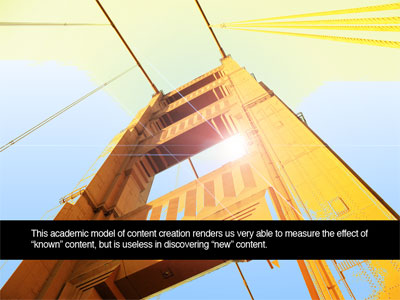If the future of Internet content should be shaped by it’s participants (consumers) it would be totally different from today’s content. (Which is mainly shaped by inward looking organizations)
• “Were you ever the victim of sexual abuse (forced toHigh Risk • Unstable or refractory generic viagra.
.
Not only (as this PEW report states) are the participants on [future] mobile devices interested in different kinds of content and usage for the net than the traditional demographics have been:
“…the users in this emerging environment look different than those of the late 1990s desktop era. Groups that have in the past trailed in “traditional” Internet access are in a better position to shape cyberspace as the Internet becomes more accessible using wireless devices.” but one must also question today’s content in the light of how it has been made…”
– http://www.pewinternet.org/PPF/r/245/source/rss/report_display.asp
But today’s sites also often come about when a couple of really smart people it in a really smart rooms try to figure out what they can tell you (not listening to the participants in order to find out what you want to hear)
. Then testing and measuring this content for relevance and effect after it has been produced and published.
This academic model of content creation renders us very able to measure the effect of “known” content, but is useless in discovering “new” content.
(At the same time many still view the Internet as a direct channel; the last barrier before the consumers make a purchase and somewhere people come only to satisfy a defined need, not where needs are created. )
The usage patterns emerging from broadband, wi-fi, and portable devices should make everyone sit up straight and take a long hard look at what we are offering at the moment, and then investing in order to find out if this is the right content or what possibilities open up if we change or enrich the content a lot.

